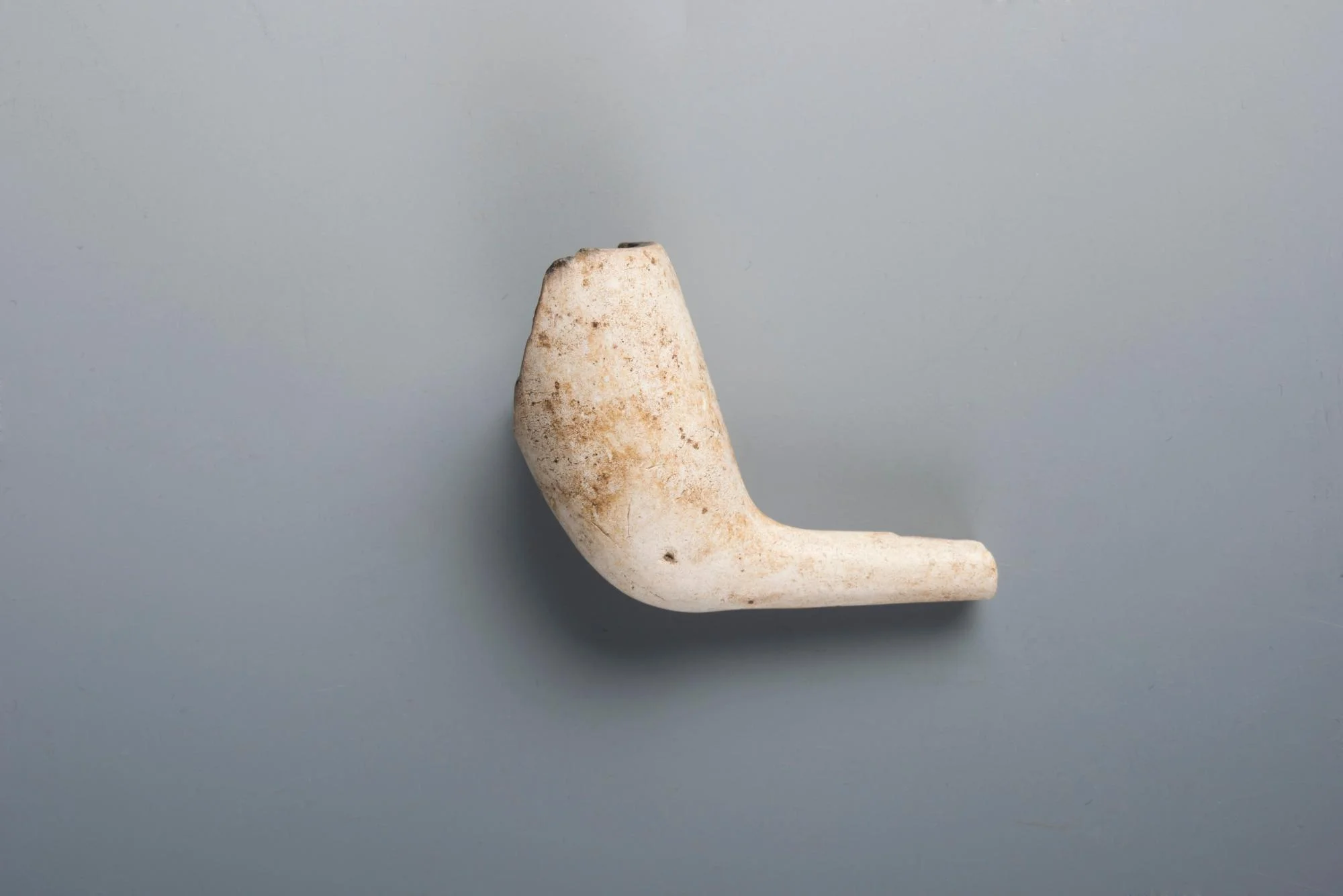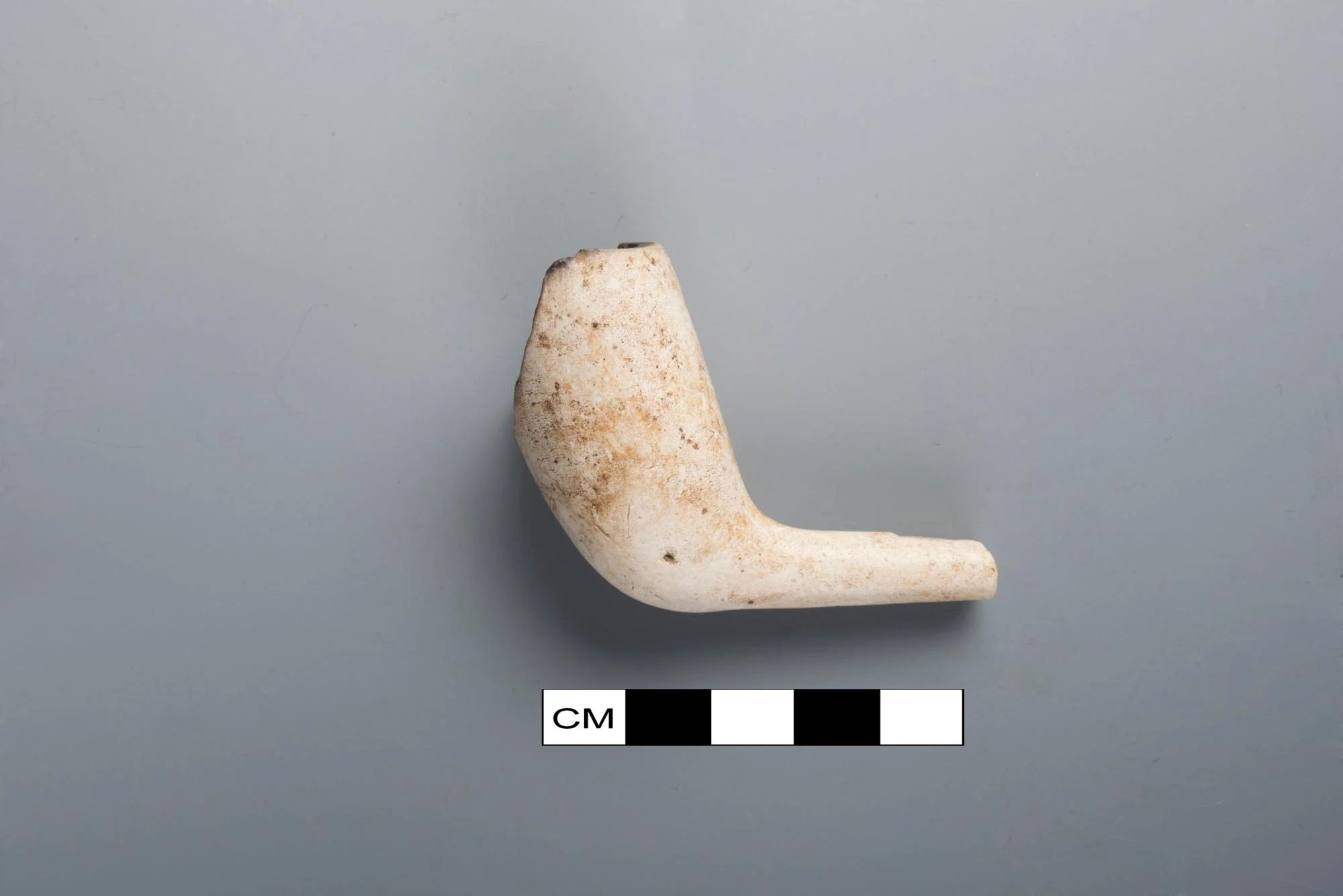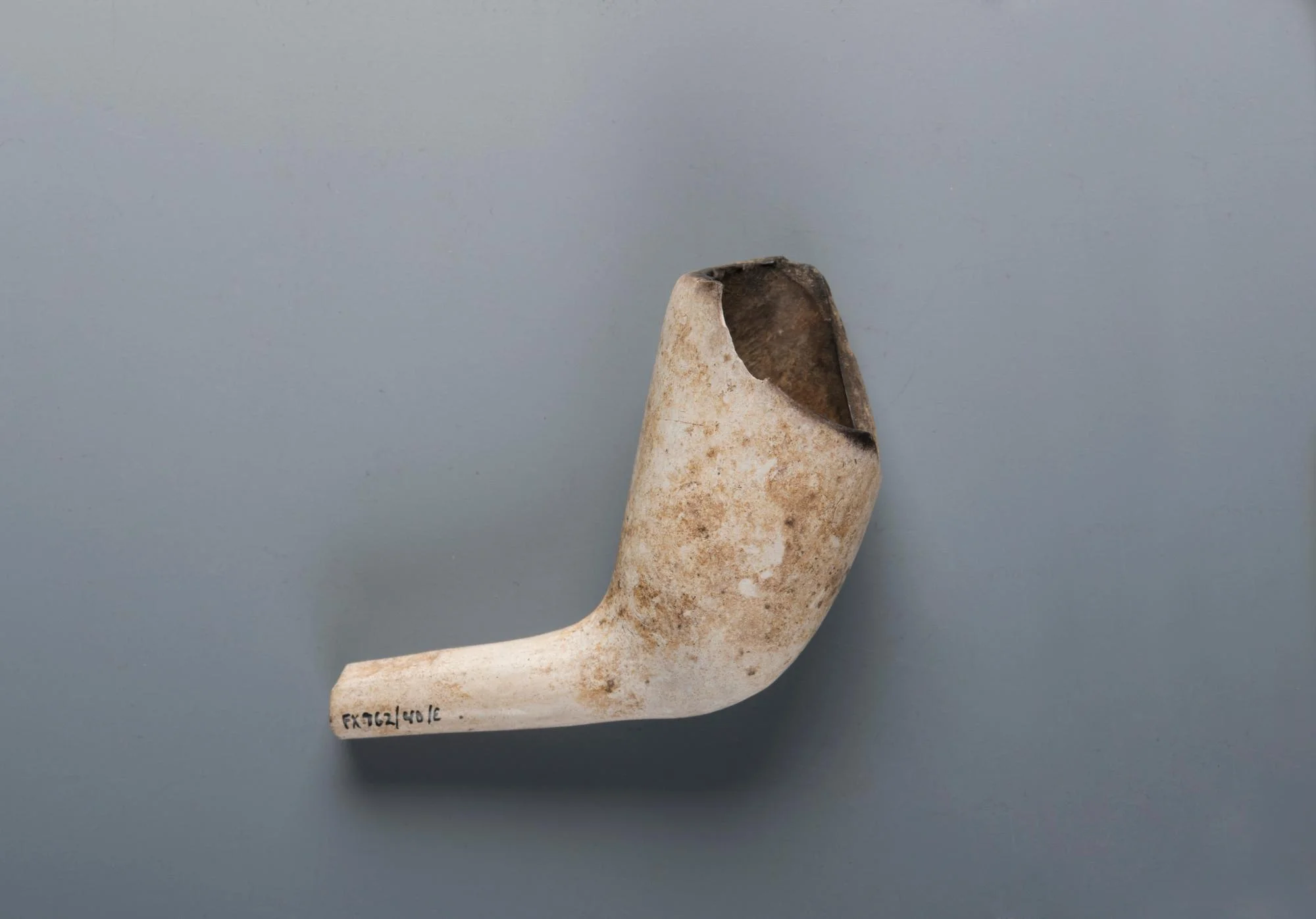Notes
This is a fragment of a white clay tobacco pipe. Smoking tobacco was an activity that permeated the lives of eighteenth century people. Individuals as diverse as planters and enslaved laborers, men and women, adults and children may all have used objects such as this pipe. Moreover, pipes would have been used while these individuals carried out a variety of activities, from relaxed socializing to laboring. Along with many of the other consumer goods of the eighteenth century American household, white clay pipes like this were primarily manufactured in Britain. Pipes like these may have arrived at Mount Vernon through bulk purchases by George Washington, who himself placed at least two orders through his London merchant for pipes in 1762 and 1773. Alternatively, such items were readily available for purchase from the local stores frequented by less affluent free, and some enslaved, individuals. Such pipes were fragile, but cheap in the eighteenth century. Their ubiquitous presence in everyday life, means that they are a common find on eighteenth century archaeological sites.
The bore diameter of the pipe stem is 4/64ths of an inch.
Object Type
Has it Been Conserved?
No
Where Was It Found?
Project Site: House for Families [more details]
Material
Manufacturing Technology
Completeness
Date
1780-1820
Country of Origin
Dimensions
21.35mm x 44.36mm x 23.61mm (W x H x L)
Illustration shows object in comparison to the size of a quarter
Weight
13.8 gram(s)
Object Number
1806983
DAACS Number
1806983
Project: House for Families
The structure identified as the “House for Families” on the 1787 Vaughan plan likely housed the majority of the enslaved population living at the Mansion House Farm for much of the second half of the eighteenth century. The building was in existence from circa 1760 until it was demolished in late 1792 or early 1793. The archaeological evidence for the structure consisted of a brick-lined storage cellar (44FX762/40-47) measuring roughly six feet by six feet. Historically the cellar served as a handy trash receptacle once it ceased to be used for its original storage function, and through extensive excavation has yielded an extremely rich assemblage of household refuse. The analysis of these remains offers the opportunity to study important aspects of the daily lives of Mount Vernon's enslaved community.
See All Objects From this Dig


 Tobacco Pipes
Tobacco Pipes